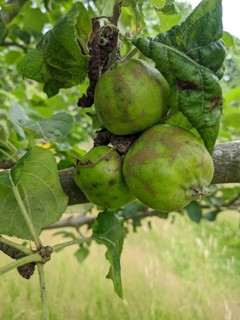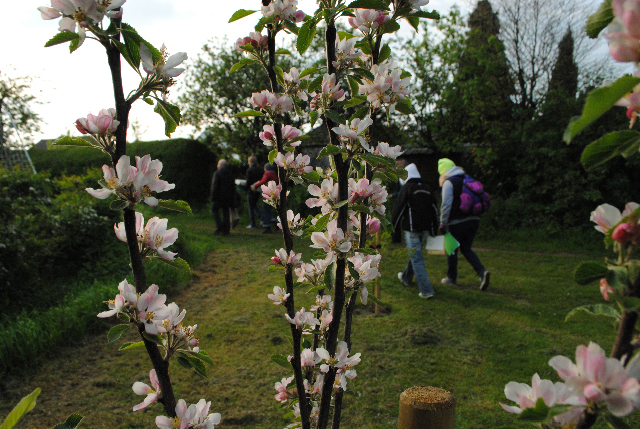
Spring walks and Environment Day Fair – I met lots of students and staff at the Environment Day fair. People very curious about ‘eating leaves’ and even more so when they hear that they can do this on campus and are encouraged to do so. People sampling young hawthorn leaves, young lime leaves, jack by the hedge (garlic mustard), dandelion, chickweed, and hedgerow pesto and bravely sampling my first batch of nettle beer. The Uni. Security staff are particularly supportive of Fruit Routes and are keen to share knowledge of where fruit and berries can already be found on campus and largely go un-noticed. Looking forward to more scouting trips with them in the Autumn. I led two walks around the first Fruit Route with time to forage and admire the young fruit trees as their roots start to explore the clay soils. All are looking healthy in blossom, bud and leaf. I’m particularly excited by the peach, apricot, quince, pear, fig and cherry that are growing up the side of the David Davies Physics building.
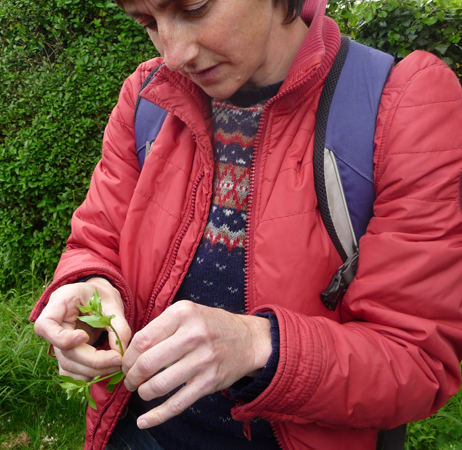
Barefoot Blindfold – Starting to inhabit the Fruit Route
Friday morning I was on campus at 5am to facilitate the Barefoot Blindfold event with Paul Conneally and Miriam Keye. Ten others came along – students, staff and local residents. A chance to experience the campus at daybreak, we located ourselves at the first orchard cluster on the Fruit Route and each of us chose one of the new trees and sat or stood next to it for half an hour wearing blindfolds to enhance our listening. We then took thirty minutes to record or respond to what we had experienced using words, images, objects. This hour was spent together in silence. This was followed by a breakfast of home made bread, local jams and juice and warm drinks back at the Shed. We had time back at the shed to share our experiences and to get some further insight into what we had heard from Ed Darby, an ecologist who works with the University.
This early morning gathering gave me the chance to anchor myself in the Fruit Route as it is now and to think about it emerging into/merging with the university landscape. Time to imagine how the small trees we sat amongst will continue to both shape the place and influence the biodiversity of the campus providing niches and food sources for insects, plants and mammals. To experience the fruit route in the process of becoming alongside others. .A local bird is already using one of the tree stakes as a perch.
I am very grateful to Martha Worsching, Lecturer in Department of Politics, History and International Relations for the following reflection on Barefoot Blindfold. See previous post for comment by Ed Darby.

A very early morning walk in mid-May? It seemed to be a nice idea to get up before five for a change to see the sun rise along the Fruit Route. I had walked along the Route at a more normal hour with a group of people interested in learning more about edible plants growing between the private gardens bordering the campus and the sports fields and halls of residence, and to see the way that nature is keeping and expanding its spaces between the cut lawns was exciting.
Now at the end of the night, on my way to the university the roads were deserted, but on campus many lights were still on and a number of clunking service lorries broke the silence. On this grey and damp morning it took me some time to find the group of Fruit Routers assembling to celebrate the planting and growing of fruit trees and bushes for public consumption.
Among apple and pear trees planted in February and watered in well by a very wet spring, we each chose a tree and sat down in the wet grass, equipped with a small mat to keep the worst damp at bay. A noisy group of students coming home late from partying approached and fell silent when they walked past us, respecting our strange behaviour, sitting in the cold morning dew with black blind-folds.
The cold crept into my bones; despite layers of clothes and attempts to think myself as part of breathing landscape, I felt frozen. The hum of traffic from town seemed to increase. The regular call of a woodpecker, the sound of blackbirds and finches …
When we took our blindfolds off, the sun had risen but was partly hidden in clouds. A faint hint of spring …
Before returning to the Shed for breakfast together, we had time to express our experiences through painting and drawing, arranging objects of nature … The hedges are a tangle of plants, some escaped from the gardens, most of them considered ‘weeds’: goose grass and garlic mustard, dandelions and nettles, elder and whitethorn. Naming them seemed to be a process of acquisition. Later in the year there would be hips and haws and sloes, and of course apples, pears, cherries, even quinces and figs one day, for all to consume. Eat your campus …
Images by Katie Murray
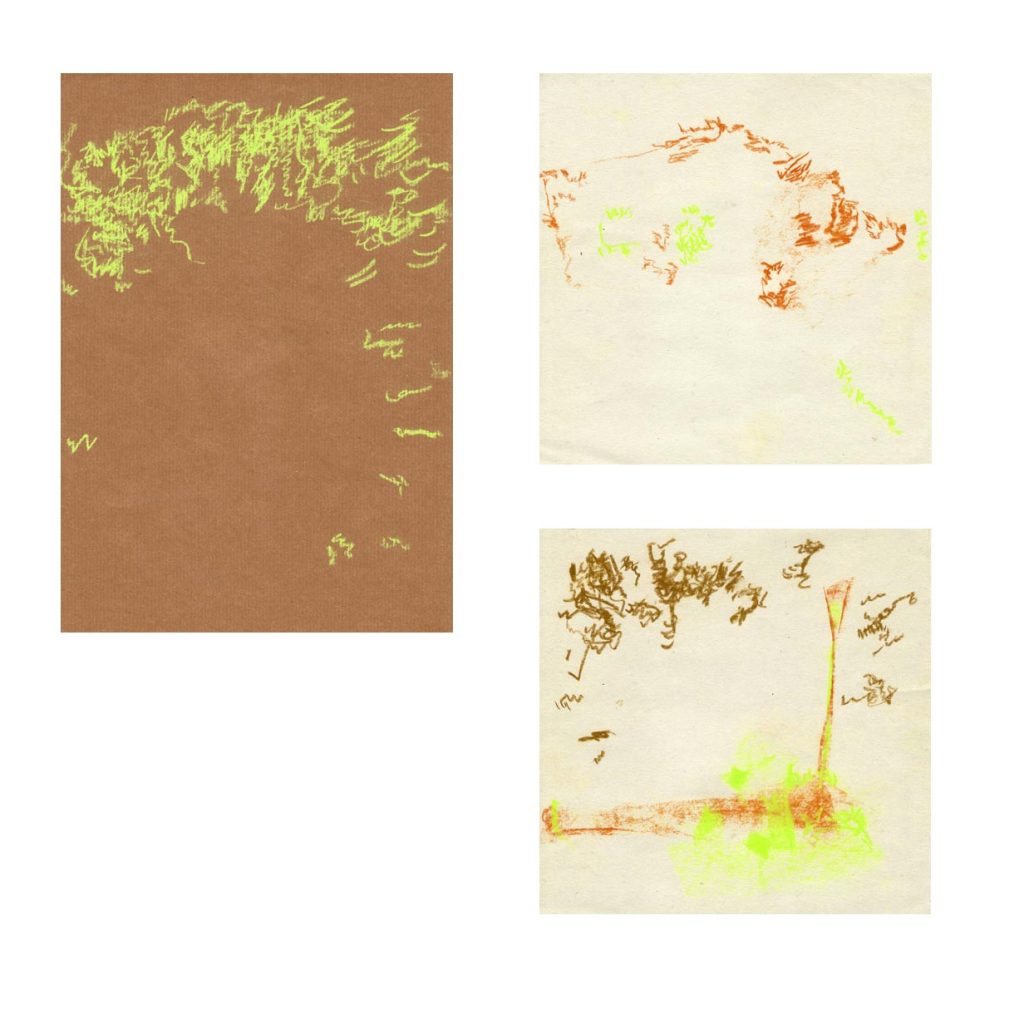
Images by Pawas Bisht
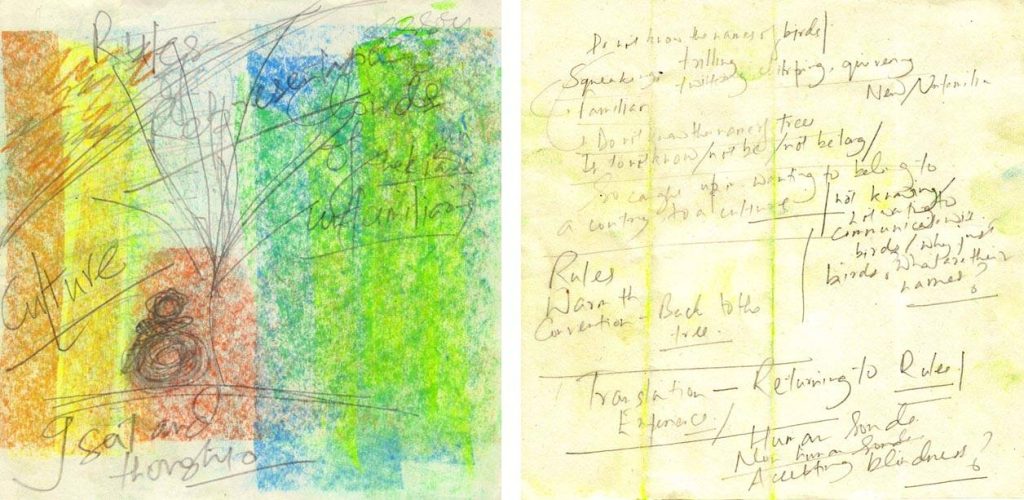
The Fruit Route is proposed as a place of performance, intervention, learning and cultural events as well as a place to harvest and enjoy.
Looking forward to harvesting more of the existing fruit trees on and around campus in Autumn along with Fruit pressing using Transition Town Loughborough’s new community press and other events. Please get in touch if you are interested in harvesting or finding out where fruit trees are on campus and harvesting them on your own or with friends or as part of Fruit Routes in October.
Thanks to Miriam, Paul, Ksenija and Pawas for photos.

